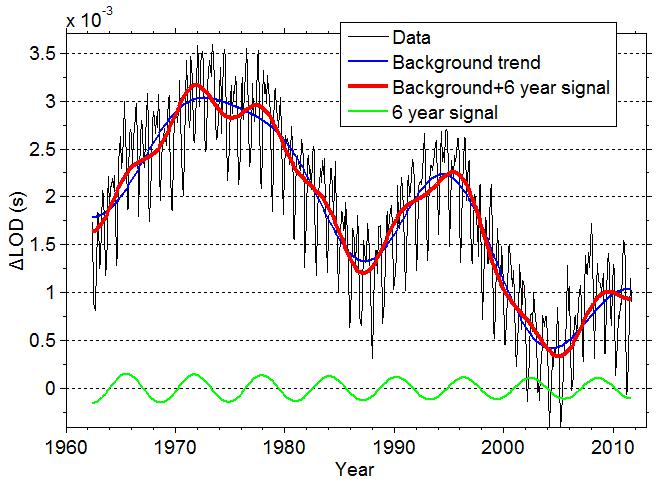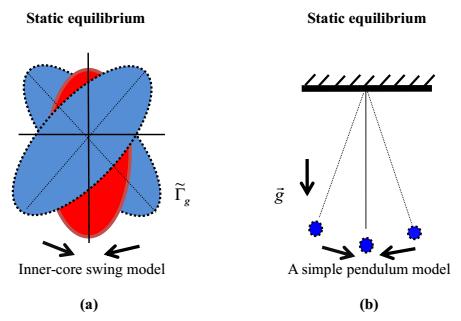Investigating of the Earth’s rotation rate on the interannual scale and its physical mechanism is very important to further understand the interior structure of the Earth, the electromagnetic (EM) coupling information within the core-mantle system and the inner core dynamics. By cooperating with professor Chengli Huang from CAS Astronomical Observatory, Dr. Pengshuo Duan, Genyou Liu, Xiaogang Hu and Jin Zhao, from State Key Laboratory of Geodesy and Earth’s dynamics in IGG, have made a new progress in deeply exploring the temporal variation feature of the 6 year oscillation signal in length of day (LOD) and its mechanism.
Using the normal wavelet transform method, the work team detected the secular decreasing phenomenon for the first time and recently further solved the geophysical mechanism of this signal and its decaying. The relevant paper has been published online in the Journal of “Earth and Planetary Science Letters”, the title of this paper is “Mechanism of the interannual oscillation and its constraint on the electromagnetic coupling at the core-mantle boundary”. This study indicates that the 6 year oscillation in LOD is attributed to the inner core natural swing like the simple pendulum, transferring the angular momentum from the inner core to the mantle, under the action of the random torques predicted by the geodynamo related to the torsional oscillation within the fluid outer core, where, the gravitational coupling torque between inner core and mantle provides the restoring force of the above swing. This signal will be a typical damping oscillation due to the dissipation of the EM coupling at the core-mantle boundary (CMB). The eigen-period of this inner core swing is 6 years and the combined quality factor (value) of the core-mantle system is about 51. The mathematical expression between the EM coupling at the CMB andis derived as well in this work. Using the latest strength of the core-mantle gravitational coupling and the radial magnetic field to constrain the quality factor of inner-core swing itself (i.e.,value) and assuming the 6 year oscillation in a free decay during the past 50 years, we obtain the radial magnetic field strength is 0.52mT~0.62mT at the CMB.
This work is supported by National Natural Science Foundation of China (grant 41774017), National Key Basic Research Program of China (973 Program, grant 2014CB845902)and Project funded by China Postdoctoral Science Foundation (grant 2017M621561).
Links on the related papers as follow:
https://www.sciencedirect.com/science/article/pii/S0012821X1730643X
http://www.sciencedirect.com/science/article/pii/S0031920117300055

Fig.1. Variations of LOD time series on various scales; the black curve signifies the LOD series that AAM has been removed; the blue curve expresses the background trend (i.e., the low-frequency part-Periodic beyond 10 years), which is obtained by the wavelet low-pass filtering method; the green curve is the target 6 year oscillation signal based on NMWT method; the red curve is the superposition of the background trend with the 6 year oscillation signal.

Fig.2 (a)Sketch of the equatorial cross section of the inner core, the free swing model of the inner core; gravitational torque provides the restoring force of this swing, the natural period ; when we are in the Earth fixed reference, we can see the phenomenon that the inner core swings back and forth just like a pendulum at the vicinity of the equilibrium position; where, the red state expresses equilibrium state and the blue state indicates the non-equilibrium states excited by a random torque; (b) the simple pendulum model, period . It will be endless swing without the air drag.



